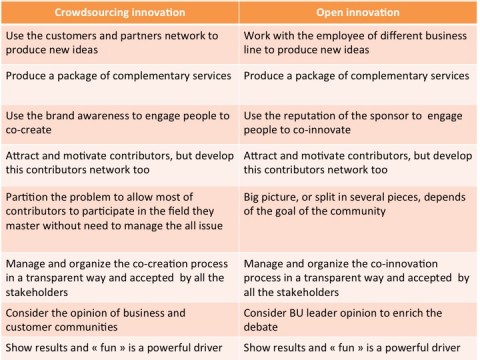The history always gave a competitive advantage to nations as to companies which knew how to get organized according to their time. The empire of Charles-Quint was a model of decentralized organization, quite as Caesar for the logistics of his armies.
In the late 90s, the Japanese manufacturers had ensured a competitive advantage through their organizations, by breaking the barriers between business line and support services of the company. We find in these examples an issue of organizational innovation.
The structures in silos are effective for the implementation of the strategy of the company, but their lack of cross communication prevents a number of innovations. Informal networks of the enterprise will enable a collaborative effort to develop innovations. Undirected, these informal networks will not be fruitful in terms of innovation, hence the need to create innovation community to facilitate these exchanges. The cycle of creation of innovation communities pass through three steps :
- Â Finding the right people: Some employees are key players in the innovation process. In addition, they are able to identify people who can interact to develop ways of progress.
- Empower them to act: These resource persons, if they are able to discover new opportunities are often unable to gather the necessary resources.
- Make the connection: If these employees are recognized for their role as facilitator / smuggler, however they did not have the means to bring the various departments of the company to collaborate on a simple idea. Therefore strengthen the links between people and between the silos of the organization by creating a climate of trust by decreasing the rivalries.
This requires a real sponsor who will allow these employees to give their time to the entire company (not to their business unit and therefore get a risk of decreasing the results of this one at first). The sponsor who can answer these three issues, will enable this community to detect engine of progress and development. I don’t come back here on the organization of these communities (joint meetings, cross training), but I shall make just three remarks:
- It’s important that the community itself offers its mode of operation (what does not prevent from guiding it in the process);
-  This community must not have a too clearly defined purpose. However, it must be aligned with business objectives. Toyota’s experience in the early 2000s shows that a clear purpose and defines, prevents innovation because employees apply and do not seek, do not think. Contradictions drive to creativity and innovation by the effect of tensions and frictions. Innovation born of the plurality of views and discussions (face-to-face / distanciel, synchronous / asynchronous) which ensue from it;
- During this process it is important to remember to remain open on the outside through a daily cross business watch (that can become collaborative), because it largely comes food for thought.
Beyond internal open innovation, this issue also relates to customers and thus affects the subject of crowdsourcing innovation
To conclude, a of cross-functional innovation process does not undermine the organization, but the « pioneers » will take full advantage of this process  when it mature, while others are still trying to understand the mechanisms. The current crisis can be a powerful force in the acceptance of breakthrough solutions, the classic processes is not powerful enough or fail when it comes to developing agility.


